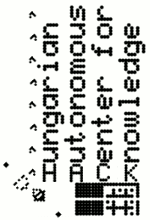So let's try building a pa0rdt mini-whip antenna.
Basic info http://dl1dbc.net/SAQ/miniwhip.html
Big problem are the transistors.
J310 only available in SMD from lomex.
2n5109 is totally outdated.
http://brainwagon.org/2013/06/03/a-nice-little-explanation-of-the-pa0rdt-mini-whip-antenna/
mentions someone built it with MPF102 and 2N3904 http://www.hestore.hu/prod_10028647.html
other alternative to 2N5109 may be 2N3866 but it's expensive as hell on hestore.hu
http://www.dl4zao.de/_downloads/Miniwhip_reloaded.pdf and here dl4zao uses bfg591 instead of 2n5109. The bias and the feedback (220 ohm at the emitter) is unmodified so I guess bfg591 can be used in the original circuit too.
http://www.schripsema.org/pa3hdf/projects/mini_whip/mini_whip.html
BF245C, 2N2219A
my own planned additions:
- RC high pass filter to improve higher frequencies
- attentuation if signal is too large for sdrplay
http://owenduffy.net/antenna/PA0RDT-MiniWhip/ the mini-whip is actually a "scam" (that does not take your money)
here is what I actually built
From http://dl1dbc.net/SAQ/miniwhip.html there is accessible two versions of the pa0rdt schematic, one with 100nF coupling and bypass capacitors and one with 560nF coupling and bypass. This latter also has a series inductor at the input to improve higher frequency reception. The latter is in the document listed as 3 Roelof Bakker, PA0RDT: The PA0RDT-Mini-Whip, an active receiving antenna for 10 kHz to 20 MHz.
I built the latter (including series inductor at the input) but changed the 560nF caps to 470nF and the 2N5109 to 2N3904. I used an smd version of the J310, SOT23-3 package.
I took into account the alternative (I think more close to reality) explanation of how the pa0rdt works by VK1OD so description of the overall (temporary) installation is needed.
The amp is about 2.5-3m above ground at the top of a PVC pipe. One simple wire connects to earth (this is probably the main element receiving RF) and the coax feedline is connected thru a 25-30cm diameter 3 turn common mode choke with an added ferrite ring (all 3 turns go thru the ferrite ring). F connectors were used and 75ohm cables (rg6 or similar). The power feed unit also uses F connectors and a DC connector for a 12V brick.
The vertically mounted mini-whip is about 5m away from any building in a rural area. Unfortunately it will soon be moved to the capitol of Hungary featuring lots of noise.
pictures of power feed unit.
I love these universal boards :)
I'm using a 1A 12V unregulated brick that gives 18V unloaded. Voltage while powering the antenna is not much lower (since it uses about only 50mA) but this additional voltage can be useful overcoming long coax DC loss. Of course I forgot to measure the actual voltage the amplifier gets when it's at the end of long coax and common mode choke.
pictures of temporary installation
pictures of the amp itself.
first results in a rural area
Hard to tell, as I "learned" the general view of HF in a different environment.
Definitely works very well hor HF/SW and MF/MW, also 160m HAM.
On higher frequencies in a couple of cases about 5-6m random horizontal wire seems to be better.
Most of the time it did not overload the sdrplay, on higher frequencies it even gave lower signal than a randome wire (long coax feed may be blamed for this). High signal levels mostly on LF and MF. I guess some parts of HF can give overloading signal when propagation is good.
bugfixes
The amp seemed to oscillate or at least have a very sharp peak around 33Mhz. I think it overloaded the sdrplay so much that it didn't even show a nice spike around that frequency. I guess this is due to the 10uH inductor at the input. I added a 1k resistor in series with the input inductor. Indoor it looks like a solution.
The 0.6W 220 ohm resistor at the emitter of 2n3904 became hot. Considering the higher supply voltage (indoor I measured 15.3V) I decided to increase the resistor and also change the 0.6W to 3x0.6W in paralel. Right now it is 3 x 680ohm/0.6W paralel and 47ohm 0.4W added in series so 220ohm is changed to 275ohm.
